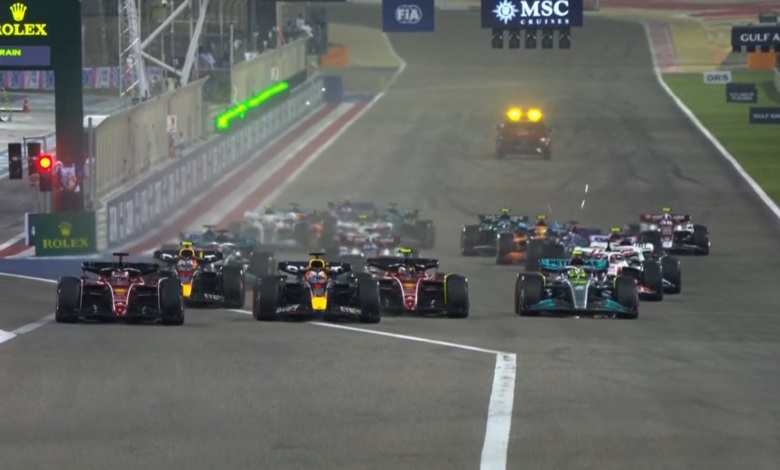F1: 2023 Season opening Bahrain GP Preview
Bahrain will open the new Formula 1 season for the third successive year, marking the first stop on a record-breaking 23-event schedule, which will include a trio of visits to the United States in Miami, Austin and Las Vegas.
The Bahrain International Circuit has featured on Formula 1’s calendar since 2004 and the 5.412km circuit is known for its lengthy full-throttle section, sweeping curves, interspersed with slow-speed tire- damaging traction zones.
The structure of grand prix weekends remains unchanged from 2022, with three practice sessions across Friday and Saturday providing time to maximize the cars ahead of Saturday qualifying.

Following an incredibly busy pre-season test, teams have had a few days to reflect and analyze, and they’re looking forward to getting the cars back on the track to finalize the preparation for this weekend’s Bahrain Grand Prix.
They completed a lot of valuable running last week, which allowed all the teams to run a comprehensive testing program. The teams have since worked through the data, which has helped them plan for race weekend.
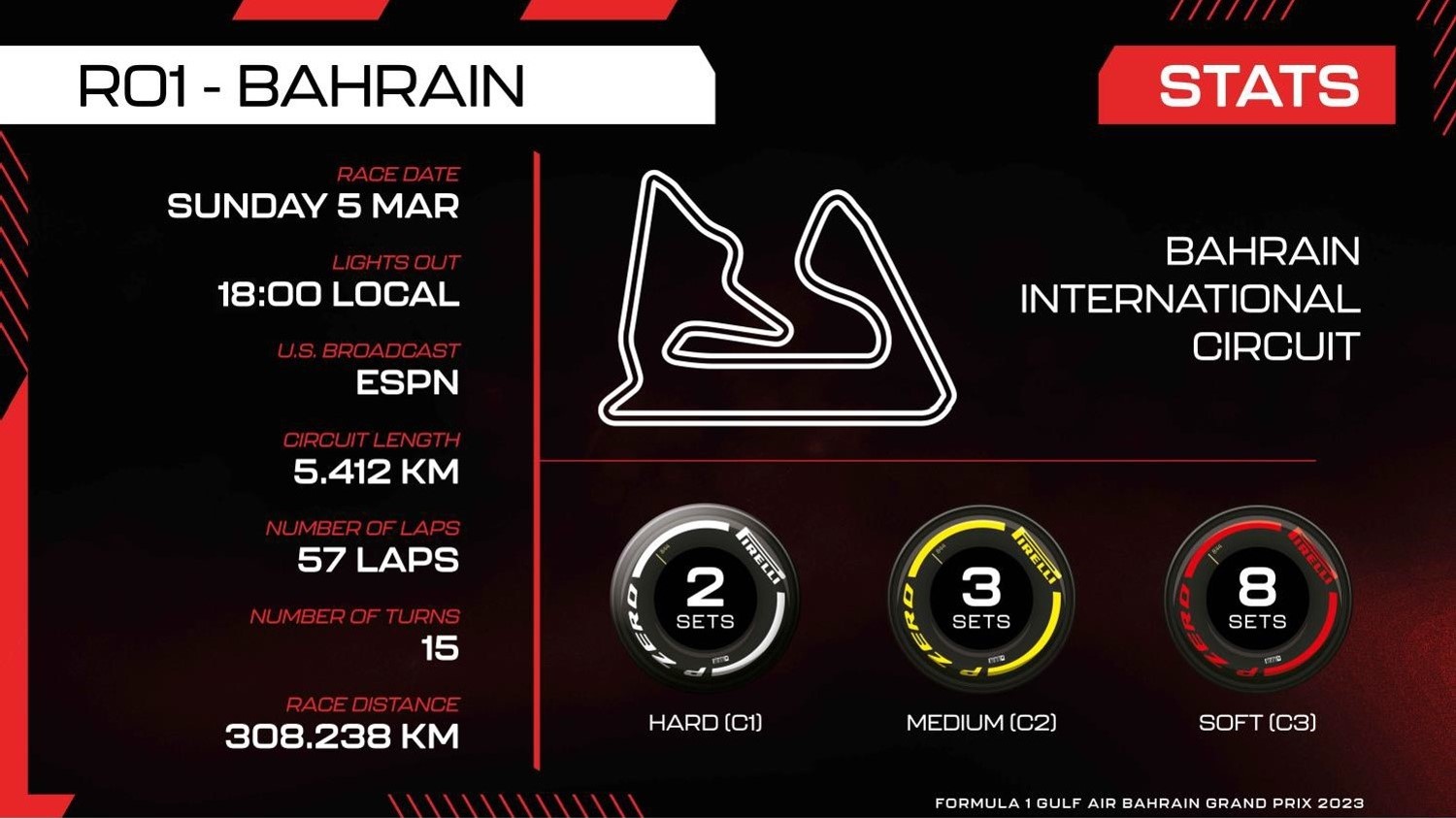
Overtaking – These new cars appear to be able to follow more closely through corners but benefit less from the slipstream along the straights. Bahrain’s three DRS zones should therefore prove beneficial. In 2021, there were 55 overtakes following the first lap. A key focus for engineers early in the season will be analyzing the difference in overtaking compared to previous campaigns.
Track Conditions – It’s tough from a tire management perspective as the temperatures are high and track is very rough; teams also have the added challenge of understanding how the 18-inch Pirellis cope with those conditions. The track is tricky because, as we saw in testing, it’s very windy, sandy and hot which are tough conditions to contend with.
Unlocking The Lap
Two key corners can make or break a lap around Sakhir’s 5.412km Bahrain International Circuit.
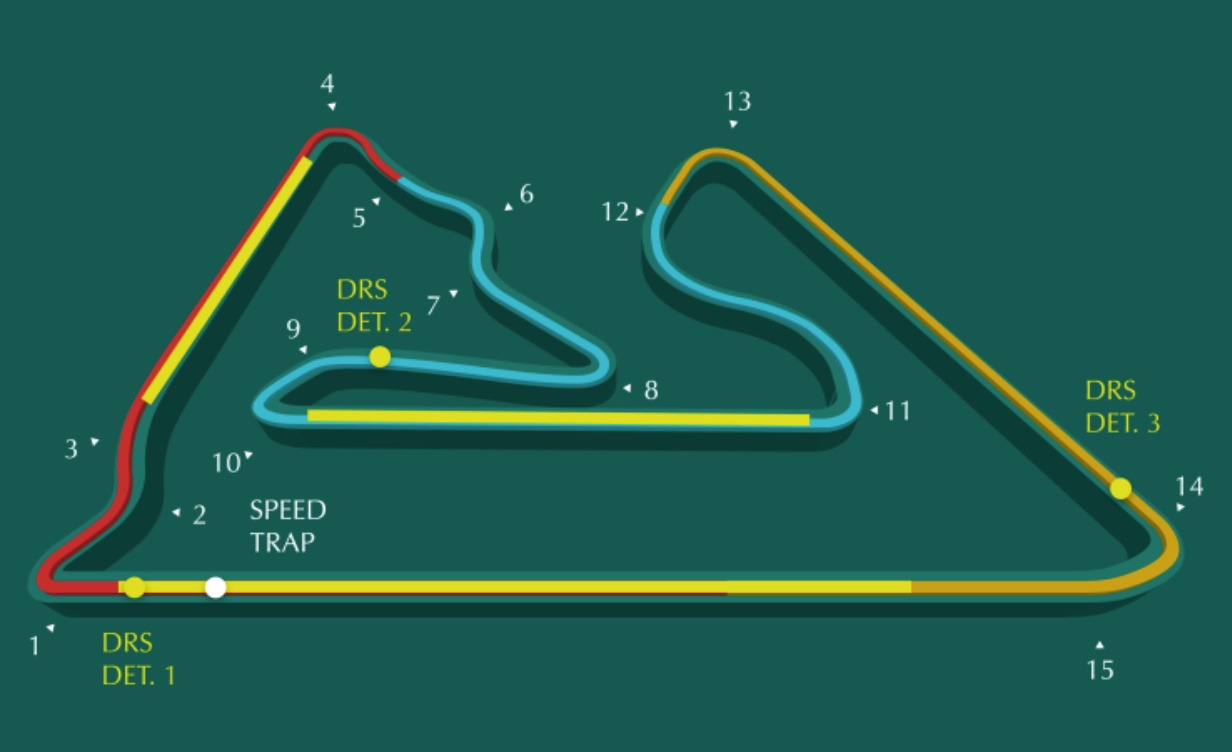
The first corner in Bahrain is crucial: blasting down a 1.2km straight, the 120m braking zone is particularly long, with drivers needing to shed roughly 241km/h (150mph). Getting the approach right is essential as it has a knock-on to Turns Two and Three and, often, can set up a pass into Turn Four. This is arguably the busiest part of the lap.
Turns 9-10 may look straightforward, but this combo is one of the most challenging corners on the whole calendar. Turn Nine is a flat-out kink, which reduces the load on the left-front tire, but Turn 10 arrives quickly and requires plenty of mechanical grip. With the heavier, ‘lazier’ cars, expect to see lots of understeering moments at the exit.
Overtaking: Bahrain is traditionally one of the easier circuits to overtake on, with an average of 60 passes per race over the past five years. The trio of DRS zones are key: historically, 65% of all overtakes have used DRS. Turn One is the most popular overtaking location, with moves into T1 also setting up a counterattack into Turn Four.
Strategy: Like last year, Pirelli is bringing the C1, C2 and C3 compounds to Bahrain. Unlike last year, the C1 is no longer the hardest tire available this season, instead being a new, softer compound between C0 and C2. Despite a long pit delta, this has traditionally been a two- or three-stop race due to high tire wear.
Safety Cars: Four of the last five races have featured a Safety Car (SC), while the Virtual Safety Car (VSC) also has a strong likelihood of making an appearance, meaning teams need to factor it into strategy. With the long pit delta, a pitstop during a SC or VSC period can be very beneficial in the race.
Fact File: Bahrain Grand Prix
- Located in the middle of the desert, on what was formerly a camel farm, the Bahrain International Circuit features 1,120 palm trees.
- Being situated in a desert, you may expect sand to be an issue. However, the surrounding desert is sprayed with a sticky adhesive substance to minimize the amount of sand blowing on to the track.
- From the first breaking of the ground to build the Bahrain International Circuit to completion took just 496 days.
- The length of the tire barriers is 4100 meters and a total of 82,000 tires are used to do this.
- The total run-off area is 140,000 sq. meters.
- The Bahrain International Circuit has five FIA certified track layouts.
- Focus for car set-up is on optimizing low and medium-speed corner performance. Mechanical grip is crucial out of the slower corners, whilst the high-speed sections are easily taken flat-out.
- The track surface is made from a special aggregate that was shipped from a quarry in England. It is one of the roughest surfaces of the season.
- Owing to the abrasiveness of the track, which is one of the roughest of the season, tire degradation tends to be amongst the highest seen at any race across the calendar.
- Paddock working hours have been reduced by one hour for 2023, with the third of three restricted periods (effective on Fridays) beginning earlier this year. There is therefore less time for operational personnel to work on the cars each weekend.
- One of the most challenging corners on the track is Turn 10. It’s long, combined corner entry that tightens before dropping away at the apex. Drivers must apply the brakes whilst completing the wide corner arc of Turn 9; this causes the front-left tire to go light and increases the risk of a lock-up.
- The 5.412 km layout comprises seven braking events, including one classified as ‘heavy.’

A word from the World Champion – Max Verstappen
“I stayed out in Bahrain after the test, so it’s been a nice lead up to the race weekend. With all the testing we have completed, we are heading into the weekend in a good position. There’s a lot to be said about reading into the data at testing, each track is very different in terms of how a car can behave, so I think as a Team we will focus on improving and always trying to do better and that’s what we have to keep doing throughout the year. We had three positive days at testing but now this is where it counts, at the race.”
Verstappen may have 15 races to his name in 2022, but the Bahrain GP was not one of them. The reigning World Champion has never won the race and will be only too happy to change that. Together with Red Bull Racing, Verstappen hopes to kick off the season with a win and thus make a stronger start than the year before.
Weather Forecast
Friday, March 3 – FP1 and FP2 weather
Conditions: Pleasant with plenty of sunshine; a high UV index of 7 and NNW winds blowing at 13km/h, with wind gusts at 20km/h, and no probability of a thunderstorm.
Maximum temperature expected: 24°C | 75.2°F
Minimum temperature expected: 16°C | 60.8°F
Chance of rain: 0%
Saturday, March 4 – FP3 and Qualifying weather
Conditions: Pleasant with plenty of sunshine; a high UV index of 7 and NNW winds blowing at 11 km/h, with wind gusts at 20km/h and no probability of a thunderstorm.
Maximum temperature expected: 25°C | 77°F
Minimum temperature expected: 18°C | 64.4°F
Chance of rain: 0%
Sunday, March 5 – Race weather
Conditions: Pleasant with plenty of sunshine; a high UV index of 7 and SSE winds blowing at 13km/h, with wind gusts at 19km/h, and no probability of a thunderstorm.
Maximum temperature expected: 27°C | 80.6°F
Minimum temperature expected: 20°C | 68°F
Chance of rain: 0%
Pirelli Tires
Mario Isola – Motorsport Director
“The new C1 can be a valid option for the race”
“The first race of the championship will be an important test bench to validate all the development work we have carried out last year, which allowed us to further improve the structure of the tires and introduce a new compound. Our latest C1 will make its debut at Sakhir: an entirely new compound based on last year’s C2, which allows us to reduce the performance gap between the harder compounds in the range. We expect it to be a valid option for the race this weekend as well. The ‘undercut’ is often pivotal to the Bahrain Grand Prix, so it will be interesting to see how the teams make use of this new element in the trio of compounds that are nominated for Sakhir.”
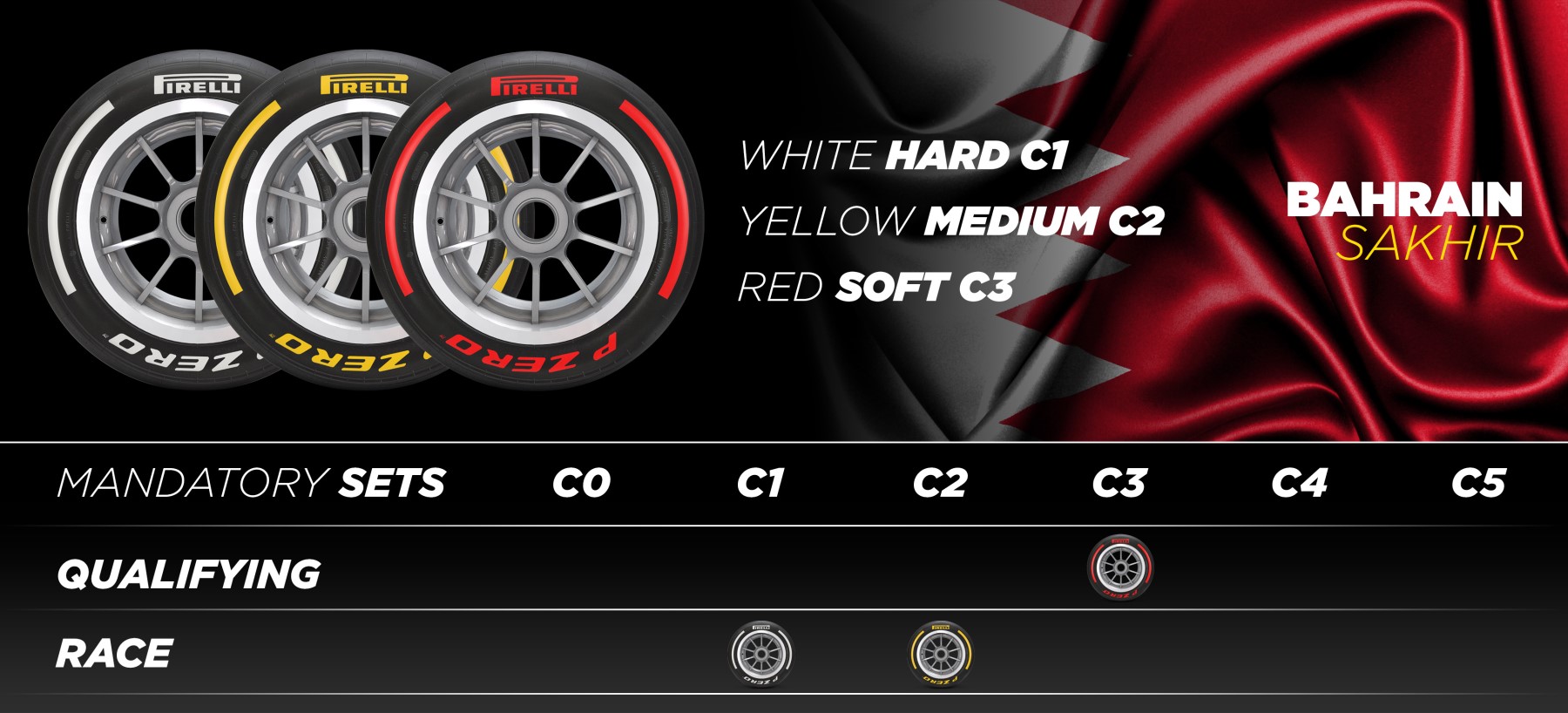
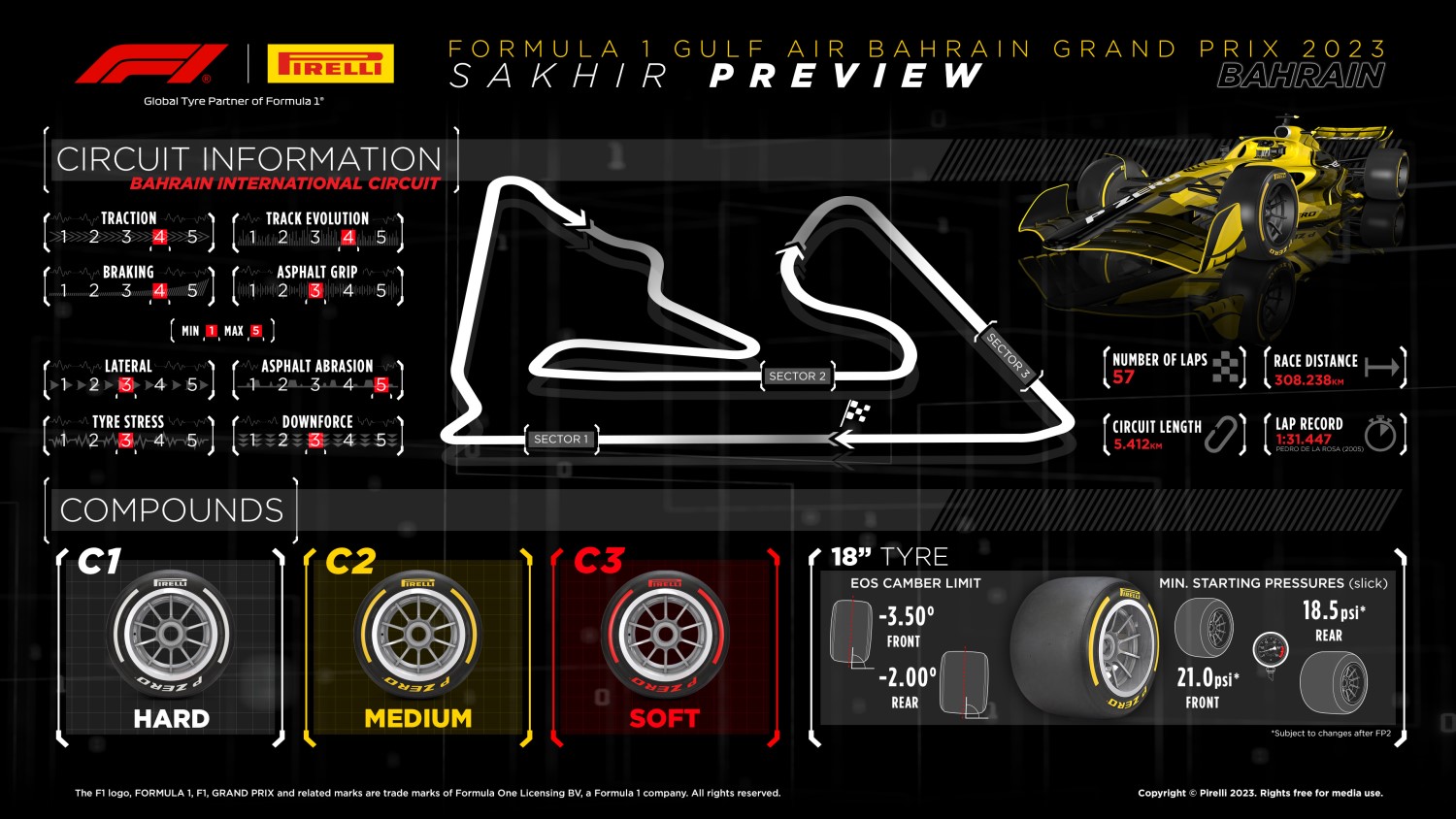
THE TireS ON TRACK
- The new C1 makes its debut at the first race of the season in Sakhir. This year, Pirell has expanded the range of available compounds to six, with three still chosen for every race. The brand new C1 compound fills the gap between the hardest C0 (used as the C1 in 2022) and the C2, which is unchanged from last year.
- At the Bahrain Grand Prix, C1 will be the P Zero White hard, C2 will be the P Zero Yellow medium and C3 will be the P Zero Red soft. The teams will have at their disposal two sets of hard tires, three sets of mediums, and eights sets of soft per car, as well as the usual allocation of Cinturato intermediate and full wet tires.
- The Bahrain International Circuit features some of the most abrasive asphalt of the year while the track – consisting of low to medium speed corners – mainly places traction and braking demands on the tires. The layout also requires a good level of stability at the rear of the car.
- The wide range of temperatures is a factor to take into consideration. Asphalt temperatures can reach 45 degrees centigrade during the day, dropping by at least 15 degrees as evening falls. FP2, qualifying and the race – which all begin at 18:00 – will therefore be run in very different conditions to the remaining sessions, which take place in the early afternoon.
- The Bahrain Grand Prix takes place on a circuit surrounded by the Sakhir desert. Wind can sometimes blow sand onto the track, affecting the grip levels during the sessions. The support races include Formula 2 and Formula 3, with the resulting rubber laid down influencing track evolution.
- Tire degradation will be a key factor when it comes to deciding the strategy. Last season, all the drivers bar one stopped three times (rather than the anticipated two-stopper) due to a late-race safety car. The winner Charles Leclerc (Ferrari) carried out his first two stints on the soft, before swapping to the medium. The safety car allowed him to put the soft back on for the final run to the flag, ahead of his team mate Carlos Sainz.
A-Z Guide to Bahrain GP
